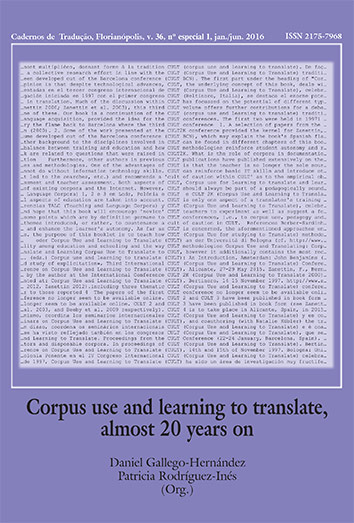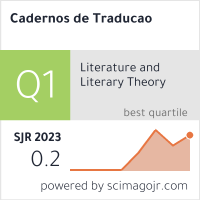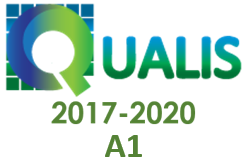Learner corpora, corpora of professional translations and creative writing in a course on translation of general texts: an action research project
DOI:
https://doi.org/10.5007/2175-7968.2016v36nesp1p121Resumo
This paper describes the design of a small action research project conducted in a course on translation of general texts from German into Spanish. The project methodology combines creative writing techniques with those of data-driven learning put forward by Johns (1991) for foreign language learning and applied by Laviosa (2014, in press) to translator training, as well as with the methods of corpus use for learning to translate proposed by Marco and Van Lawick (2009). The aim of the project is threefold: (i) raising the students’ awareness on the possibility of interference between German and Spanish past tenses when translating narrative sequences; (ii) allowing the students practicing data-driven learning about translation issues, and (iii) observing if these interventions bring about a qualitative change in their translation performance, specifically in the decrease of interference when translating narrative sequences with past tenses from German into Spanish. In the paper, special attention will be paid to the theoretical basis of the project, as well as to the methodological decisions involved in its design.
Referências
Anthony, L. AntConc (versión 3.4.3) [Programa de ordenador]. Tokyo, Japan: Waseda University. 2014. Disponible en http://www.laurenceanthony.net/ [último acceso: 14 de julio de 2015].
Best, J. “Die Bedeutung der Grundsprachlichen Kompetenz in der Übersetzer- und Dolmetscherausbildung.” In: S. Kalina y J. Best (eds.), Übersetzen und Dolmetschen. Eine Orientierungshilfe. Tubinga: Francke, 2002. 123-133.
Cano, E. El portafolios del profesorado universitario: Un instrumento para la evaluación y para el desarrollo personal. Barcelona: Universitat de Barcelona, 2005.
Denturck, K. “The compilation and explitation of a parallel bidirectional corpus for the purpose of translation studies.” Ponencia pronunciada en CULT IV – Corpus Use and Learning to Translate, Universidad de Alicante, 27-29 de mayo de 2015.
Farkas, A. LF Aligner (version 4.1). 2015. [Programa de ordenador]. Disponible en https://sourceforge.net/projects/aligner [último acceso: 4 de abril de 2015].
Fernández de Castro, F. Las perífrasis verbales en el español actual. Madrid: Gredos, 1999.
FreeOCR (versión 5.4.1) [Programa de ordenador]. Disponible en http://www.paperfile.net/download.html [último acceso: 13 de julio de 2015].
Hassler, G. “Übersetzungsvergleich als Zugang zur Untersuchung funktionaler Kategorien des Verbs in den romanischen Sprachen.” In: H. M. Albrecht y H.-M. Gauger (eds.), Sprachvergleich und Übersetzungsvergleich. Frankfurt/M.: Peter Lang, 2001. 51-75.
Heinemann, W. y Viehweger, D. Textlinguistik. Eine Einführung. Tubinga: Niemeyer, 1991.
House, J. “Explicitness in Discourse Across Languages.” In: J. House, W. Koller y K Schubert (eds.). Neue Perspektiven in der Übersetzungs- und Dolmetschwissenschaft. Bochum: AKS-Verlag, 2004. 185-207.
Johns, Tim. “Should you be Persuaded: Two Examples of Data-Driven Learning.” Classroom Concordancing. ELR Journal (1991): 1-16.
Järventausta, M. “Scenes & Frames & Übersetzen.” Jahrbuch Deutsch als Fremdsprache 24 (1998): 217-234.
Katelhön, P. “Verbalperiphrasen übersetzen. Linguistische Betrachtungen für das Sprachenpaar Deutsch-Italienisch.” In: L. Cinato et al. (eds.), Intrecci di lingua e cultura. Studi in onore di Sandra Bosco Coletsos. Roma: Aracne Editrice, 2012. 187-205.
Laviosa, Sara. “Corpora and Holistic Cultural Translation.” In: T. Sánchez Nieto (ed.). Corpus-Based Translation and Interpreting Studies: From Description to Application / Estudios traductológicos basados en corpus: de la descripción a la aplicación. Berlín: Frank & Timme Verlag für wissenschaftliche Literatur, 2014. 31-51.
MeLLANGE. The MeLLANGE Learner Translation Corpus. http://corpus.leeds.ac.uk/mellange/ltc.html [último acceso: 15 de julio de 2015]
Marco, J. y Lawick, H. v. “Using Corpora and Retrieval Software as a Source of Materials for the Translation Classroom.” In: A. Beeby, P. Rodríguez-Inés y P. Sánchez-Gijón (eds.). Corpus use and Translating: Corpus use for Learning to Translate and Learning Corpus use to Translate. Ámsterdam: John Benjamins, 2009. 9-28.
Nord, C. Kommunikativ Handeln Auf Spanisch Und Deutsch. Ein Übersetzungsorientierter Funktionaler Sprach- Und Stilvergleich. Wilhelmsfeld: Gottfried Egert Verlag, 2003.
---. Lernziel : Professionelles Übersetzen Spanisch - Deutsch : Ein Einführungskurs in 15 Lektionen. Wilhelmsfeld: Egert, 2001.
Sánchez Nieto, María Teresa. “Expresión de la fase inicial de la situación en español y en alemán. Un estudio contrastivo unilateral a partir de construcciones perifrásticas españolas.” In: P. Elena y C. Fortea (eds.), STIAL. II Simposio sobre la traducción de / al alemán. Salamanca, Facultad de Traducción y Documentación, 3-5 de abril de 2003. Salamanca: Universidad de Salamanca, 2005. 193-203.
---. Las construcciones perifrásticas españolas de significado evaluativo y sus equivalentes alemanes en la traducción: con ejercicios para la clase de español como lengua extranjera. Frankfurt am Main etc.: Peter Lang Verlag, 2005.
---. “Explicitación de la fase inicial mediante perífrasis verbales: estudio descriptivo de traducciones del alemán al español en traducciones profesionales y estudiantiles.” In: José J. Amigo Extremera (ed.), Traducimos desde el sur. Actas del VI congreso internacional de la Asociación Ibérica de Estudios de Traducción e Interpretación. Las Palmas De Gran Canaria, 23-25 de enero de 2013. Las Palmas de Gran Canaria: Universidad de Las Palmas de Gran Canaria. Servicio de Publicaciones y Difusión Científica, 2014. 421-440.
Simone, R. y Cerbasi, D. “Types and diachronic evolution of Romance causative constructions.” Romanische Forschungen 113.4 (2001): 441-473.
Smith, C. The Parameter of Aspect. Dordrecht: Kluwer Academic Publishers, 1991.
SDL. SDL Trados Studio 2014 [Programa de ordenador bajo licencia]. http://www.sdl.com/es/cxc/language/translation-productivity/trados-studio/ [último acceso: 16 de febrero de 2016].
Toury, G. Los estudios descriptivos de traducción y más allá. Metodología de la investigación en estudios de traducción. Trads. Rosa Rabadán y Raquel Merino. Madrid: Cátedra, 2004.
Downloads
Publicado
Como Citar
Edição
Seção
Licença
Autores mantêm os direitos autorais e concedem à revista o direito de primeira publicação, com o trabalho simultaneamente licenciado sob a Licença Creative Commons Atribuição 4.0 Internacional (CC BY) que permite o compartilhamento do trabalho com reconhecimento da autoria e publicação inicial nesta revista.
Autores têm autorização para assumir contratos adicionais separadamente, para distribuição não exclusiva da versão do trabalho publicada nesta revista (ex.: publicar em repositório institucional ou como capítulo de livro, com reconhecimento de autoria e publicação inicial nesta revista).








































